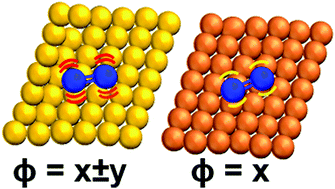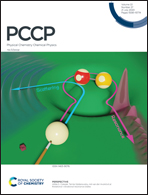Gas–solid interactions with reactive and inert gas molecules by NAPUPS: can work function be a better descriptor of chemical reactivity?
Abstract
The gas-phase vibrational spectra of reactive (H2 and O2) and inert gases (N2 and Ar) have been studied by near-ambient pressure (NAP) ultraviolet photoelectron spectroscopy (NAPUPS) up to 0.3 mbar pressure. The results obtained are divided into two parts and discussed. In the first part, the photoelectron spectra of monoatomic Ar and some homonuclear diatomic molecules, such as H2, O2, and N2, have been recorded by NAPUPS and the effect of pressure on their energy position has been studied. It has been demonstrated that NAPUPS could be an essential tool to determine the intermolecular or interatomic interactions. In the second part, we have evaluated the influence of different solid surfaces on the binding energy (BE) position, the pattern of the vibrational features of diatomic N2 molecules, and the first atomic levels (3p3/2 and 3p1/2) of monoatomic Ar. It has been observed that with a change in the (electronic/chemical) nature of the surface, the BE of the above features also changes and reflects the change in the work function (ϕ) of the material. It is to be noted that Ar is an inert/noble gas and N2 is the most stable molecule, and the above changes observed underscore that they can be employed as probe atoms/molecules to explore even the minor changes that occur on a solid surface due to a variety of reasons. Further, if the solid surface undergoes any chemical/electronic changes due to gas–solid interaction, such as oxidation/reduction, the ϕ of the surface changes again; this highlights the precise identification of the changes that occur under the reaction/measurement conditions. Therefore, the change in the BE of the gas-phase features can be used to determine even the minor changes in the ϕ of solid surfaces during the reaction or due to the reaction. The present findings have implications in probing the surface changes that occur in any surface-dependent phenomena, such as heterogeneous catalysis, electrochemistry, and materials that are predominantly controlled by surface contribution, such as layered (2D) materials, nanomaterials.



 Please wait while we load your content...
Please wait while we load your content...